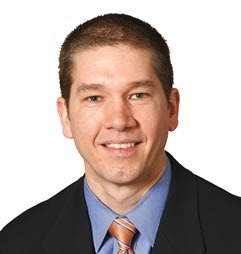Exercise-induced bronchospasm (EIB) is defined as acute, transient airway narrowing that occurs in association with exercise.
Exercise-induced bronchospasm can occur during or, more frequently, after exercise.
It is most commonly characterized by symptoms of coughing, wheezing, and/or chest tightness; however, more subtle symptoms of fatigue and poor athletic performance may be the only complaint.
What is known to cause EIB?
We do not know at this point. The precise set of cellular events that triggers bronchoconstriction in response to exercise challenge remains to be fully defined; however, airway inflammation, epithelial injury, inflammatory mediators, cellular influx into the airways, and sensory nerve activation all probably play important roles.
Who does EIB affect? Does it only affect asthma patients?
Exercise is a very common trigger of bronchospasm in patients with asthma. 80-90% of patients with asthma experience exercise-induced bronchospasm at some point in their life.
EIB is often the reason why patients with asthma initially present to health care providers.
Exercise-induced bronchospasm also occurs in approximately 10% of individuals who do not have chronic asthma. These patients who have EIB but not asthma do not exhibit the typical features of chronic asthma (ie, frequent daytime symptoms, nocturnal symptoms, impaired lung function).
Exercise can be the only stimulus that triggers respiratory symptoms in these patients.
Why is the prevalence of EIB so high among athletes?
It is likely a combination of factors. We look for EIB more keenly in athletes, because frequently there is a significant focus placed on their athletic performance.
Also, athletes exercise more often than the general population, so they are more likely, just based on probability, to experience EIB.
The American Thoracic Society has recently released new official clinical practice guidelines on the diagnosis and management of EIB. How do these differ from previous guidelines?
These guidelines are truly evidence-based. An extremely rigorous methodological approach was used to produce this document. The final document reflects what the current evidence in the literature has shown.
Documents in the past were typically put together based on expert opinion and consensus which may not be consistent with what the literature truly shows.
What evidence are these guidelines based on?
A comprehensive and systematic review of the current literature pertaining to EIB was performed with the assistance of a professional, medical, research librarian.
The recommendations made in the guidelines come from a careful review of the findings from existing and pertinent studies found based on the literature searches performed.
Which EIB treatments are banned in athletics and what should athletes competing in these sports do to manage their EIB?
The rules may be different depending on whether the athlete is an international athlete or collegiat/high-school athlete.
In international/Olympic competition, all inhaled beta-agonists are banned in competition except short-acting inhaled albuterol and salbutamol and long-acting salmeterol and formoterol.
Therapeutic doses of these medicines no longer require a waiver for permission for use. All beta-agonists are prohibited if administered orally or by injection.
All glucocorticoids are prohibited when given by oral, intravenous, or intramuscular route.
Inhaled steroids are permitted, as are oral and inhaled treatments with leukotriene modifiers, cromones (not readily available in the United States), and muscarinic receptor antagonists.
None of these agents enhance performance in athletes without asthma and, therefore, they do not require a TUE.
Athletes should be familiar with the rules that pertain to their sport/organization in order to stay compliant.
Are there plans in place to update the EIB guidelines as new clinical research data arises?
These guidelines typically are updated every 5-10 years based on new evidence. To give some context, the last set of asthma guidelines published by the National Institutes of Health was in 2007. It is not realistic to update them more frequently.
Where can readers find more information?
The newly released American Thoracic Society guidelines are the most comprehensive resource available relating to diagnosis and treatment of EIB.
Parsons JP, Hallstrand TS, Mastronarde JG, Kaminsky DA, Rundell KW, Hull JH, Storms WW, Weiler JM, Cheek FM, Wilson KC, Anderson SD; American Thoracic Society Subcommittee on Exercise-induced Bronchoconstriction. An Official American Thoracic Society Clinical Practice Guideline: Exercise-induced Bronchoconstriction. Am J Respir Crit Care Med. 2013 May 1;187(9):1016-27.
About Dr Jonathan Parsons
 Dr. Jonathan Parsons is Associate Professor of Medicine at The Ohio State University and the Associate Director of The Ohio State University Asthma Center.
Dr. Jonathan Parsons is Associate Professor of Medicine at The Ohio State University and the Associate Director of The Ohio State University Asthma Center.
He graduated Magna Cum Laude with Honors and Distinction from Duke University. He went on to Medical College of Ohio where he was elected into Alpha Omega Alpha Honor Society.
He completed his Residency in Internal Medicine and Pediatrics and his fellowship in Pulmonary and Critical Care Medicine at The Ohio State University.
Dr. Parsons’ research interests focus on asthma with a particular interest in athletes with asthma and exercise-induced asthma.
He has published over 90 manuscripts, book chapters, and abstracts in international journals related asthma and given numerous presentations internationally.
He was the lead author on the clinical guidelines for diagnosis and management of exercise-induced bronchospasm for the American Thoracic Society.